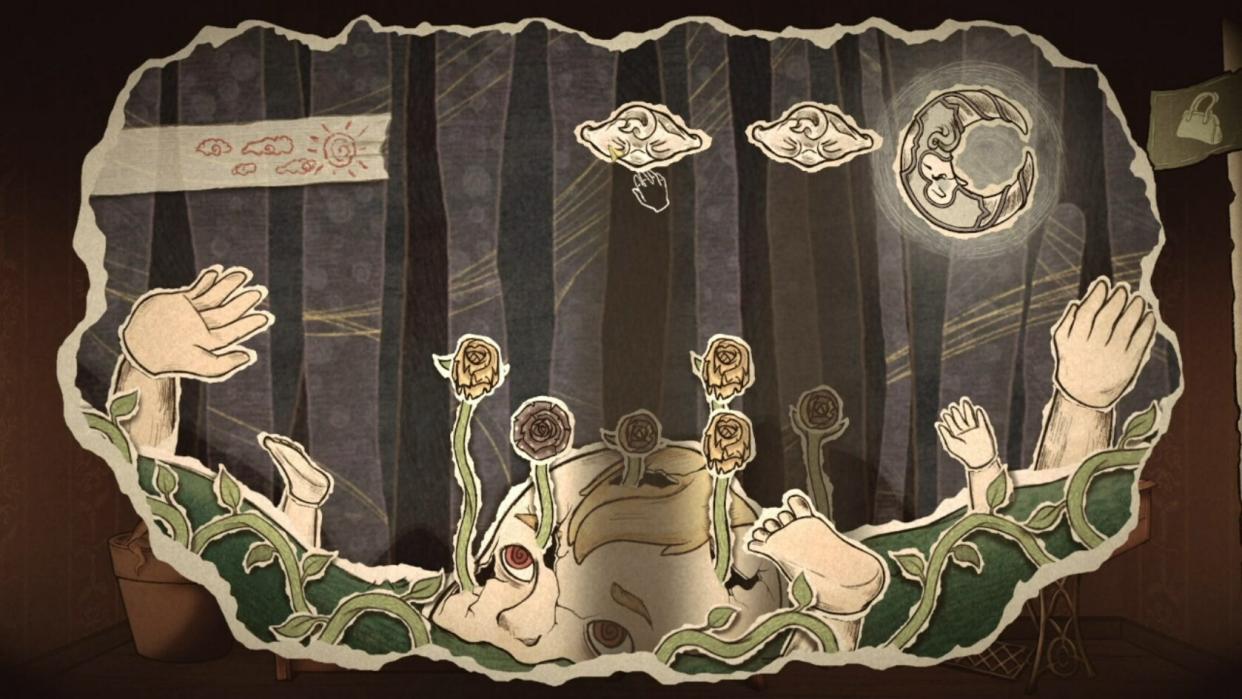Point-and-click horror Tales from Candleforth is the escape room equivalent of your childhood nightmares

Puzzle-solving point-and-click game Tales from Candleforth appears to tell a story stripped straight from a Grimm fairytale, but as you progress through its story and begin to unravel the truth, a far darker and more graphic tale unfolds. For fans of games like Little Nightmares, Bramble: The Mountain King, and Sally Face, Candleforth will feel familiar with its ability to tap into fears you would've had as a child. The story that unfolds will stick with you long after you finish the final chapter.
When your grandmother suddenly goes missing, you—as the intuitive and strong-willed yet still uncertain Sarah—decide to take it upon yourself to find her. Clues found in her room suggest that she is still alive, which is all the motivation you need to start sniffing around to see what else you can find—suddenly you're unravelling a world of occultism and horror. What starts as a twisted yet whimsical adventure suddenly churns itself into a dark, inescapable reflection of what would've petrified me as a child—towering figures with pointed fangs and dark forests that make you feel completely isolated. And yet I felt obligated to keep pushing through to try and find my missing grandmother.
In true point-and-click fashion, interacting with the environment is essential to your progression, and here Candleforth doesn't hold your hand—it's captivating because you're left to figure things out yourself. There are a lot of sequences that rely on you remembering symbols. Tiny engravings on the corner of frames that are used to unlock a box in a separate section of the room, or clues scrawled on a note that reference the order of a potion-brewing minigame. Of course, you can access your inventory and re-read any notes you've found, but you have to put real faith into your memory (or keep a notepad to hand) or you'll be retracting your steps.
This lack of guidance may be frustrating at first, and I definitely felt like certain sections were impossibly difficult because I had missed a clue or not interacted with an area of a room yet. But it does reflect how the protagonist would be feeling. She's been left to her own devices with only the clues you're also reading for the first time to guide her. The further you delve into Tales from Candleforth, the more you start to think outside of the box to solve its puzzles. Every small symbol you find feels worth remembering, and while a lot of this is used to trick you or throw you off the scent of its mysteries, this does help the sense of satisfaction that comes when you finally work out the labyrinth of puzzles ahead.
However, the feeling of satisfaction I got from completing challenging tasks was quickly reduced to nothing due to how bleak Tales from Candleforth becomes. Someone always gets punished for your actions, undermining any sense of achievement at successfully solving a puzzle. There's never enough time to understand whether or not this was deserved since you don't get to develop relationships with any of the characters you find, such as the flower-headed opera singer or the overworked book writer. You simply come across them, and have to sacrifice them to progress through the story—the pleasure of a job well done is replaced with a looming sense of guilt since I never really understood why I had to make sacrifices in the first place.
But even though I walked away feeling unsatisfied with my actions and the fact that there was nothing I could do to rectify it, that's what Tales from Candleforth aims to capture. You're not supposed to feel like the good guy, but rather question whether or not you've been the villain all along since you've been so willing to take down others to get what you want. There's no sense of winning despite all your efforts, and all it took was a trek through a nightmarish landscape to realise that. However, despite how hard it tests you and tries to scare you through its ominous character and environment design, Candleforth sinks its hooks into you and fans of folk horror will find a lot to love about it and wish that there were more pages to turn and chapters to complete.

